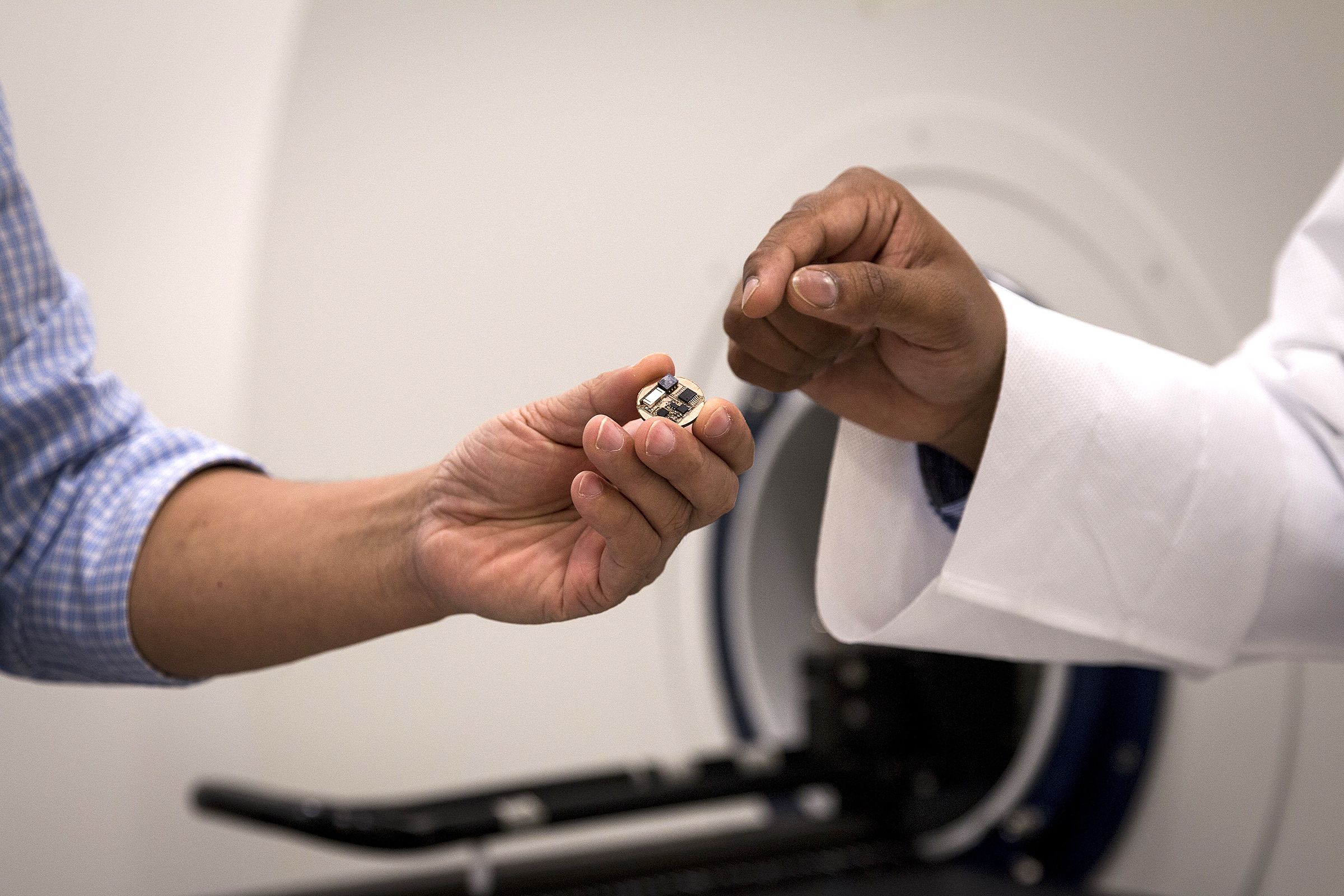Magnetic resonance imaging (MRI) has become one of the most important tools available for looking inside the human body, especially for disorders of the brain and nervous system, which are not easily accessible and for which it is often the only effective imaging tool. But imaging is not the only way of monitoring these systems, and it has up to now been impossible to use MRI and other techniques such as EEG or ECG simultaneously. A team at Indiana’s Purdue University has now developed a device that allows medical imaging and recording to be carried out at the same time.

“When a patient is receiving an MRI scan, it is very difficult to also monitor brainwaves, ECG, or other biological signals,” explained Nishant Babaria, co-author of a paper presented at the recent International Society for Magnetic Resonance in Medicine conference in Honolulu. “MRI alone does not always provide enough information to clinicians. There is tremendous scientific and clinical value in using multiple technologies together on a single platform.”
Making use of the electromagnetic field present inside an MRI machine during scanning, Babaria and colleagues Ranajay Mandal and Zhongming Liu have developed their device, which is smaller than a penny and can be placed inside the scanner.
In their conference paper they describe how it can be used to simultaneously perform functional MRI (fMRI), which indicates regions of the brain that show activity when tasks are being performed with ErEG which measures the brain’s electrical activity over wider areas.
“Although small, the device is very powerful and allows researchers to record, stimulate, and image the brain or other organs all through the MRI system,” Liu said.
“We believe this device is the first of its kind,” Babaria added. “It’s wireless and directly powered and operated by the MRI. It is much more affordable than other commercial systems, and provides much better quality in neural recording and stimulation during MRI imaging. The device has great potential to significantly improve the safety, efficacy, and precision of medical diagnostics for patients who suffer from epilepsy, Parkinson’s diseases, depression, and many more diseases.”




IEA report claims batteries are ‘changing the game’
The weight and bulk of static batteries, even domestic units, is immaterial. The IEA's trilemma is illustrated here:-...